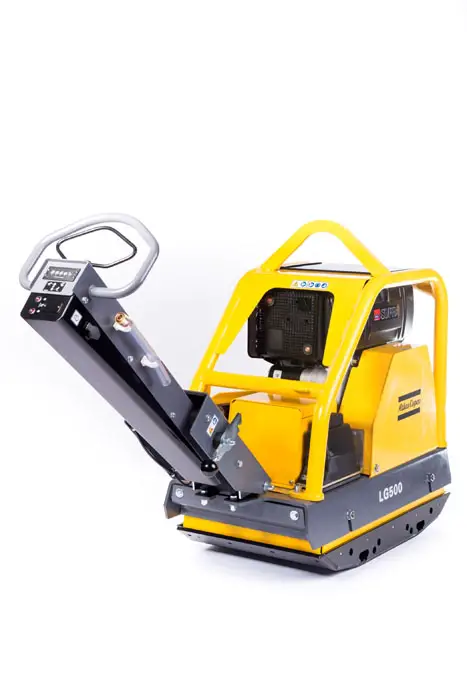The complexity of different soil types makes quality compaction a challenge. Too little compaction and the soil may settle, causing structure failure. Too much compaction leads to unnecessary machine wear and downtime. Over-compaction can also cause some soils to “crack” under increased pressure.
The compaction indicator on the Atlas Copco LG500 reversible plate measures the vibration patterns in the plate and shows how well the soil is compacted beneath the surface.
The compaction indicator is mounted at the centre of the handle and the system communicates via a clear system of indicator lights. The three lights; yellow green and red, signal the different stages of compaction. When the red light flashes the particular soil type has reached maximum compaction and it is time to stop.
By combining compaction indicator-technology and operator’s knowledge, the risk of over- or under compacting is much reduced. The combination will save the operator’s time and increase uptime for the reversible plates. This is thanks to less servicing, due to machine wear.
To get an even safer compaction experience, the Atlas Copco’s CompBase provide detailed compaction data and capacity information based on full-scale tests. The machine and method selection is based on the material to be compacted and provides information on the expected depth effect and degree of compaction after any given number of passes.
Atlas Copco is a world-leading provider of sustainable productivity solutions. The Group serves customers with innovative compressors, vacuum solutions and air treatment systems, construction and mining equipment, power tools and assembly systems. Atlas Copco develops products and service focused on productivity, energy efficiency, safety and ergonomics.
The company was founded in 1873, is based in Stockholm, Sweden, and has a global reach spanning more than 180 countries. In 2013, Atlas Copco had revenues of BSEK 84 (BEUR 9.7) and more than 40 000 employees.
Atlas Copco Construction Tools is a division within Atlas Copco´s Construction Technique business area. It develops, manufactures and markets hydraulic, pneumatic, and petrol-driven equipment for demolition, recycling, compaction, rock drilling and concrete applications. Products are marketed and sold under several brands through a worldwide sales and service organisation. The division is headquartered in Essen, Germany, and has production units in Europe, Africa and Asia.

